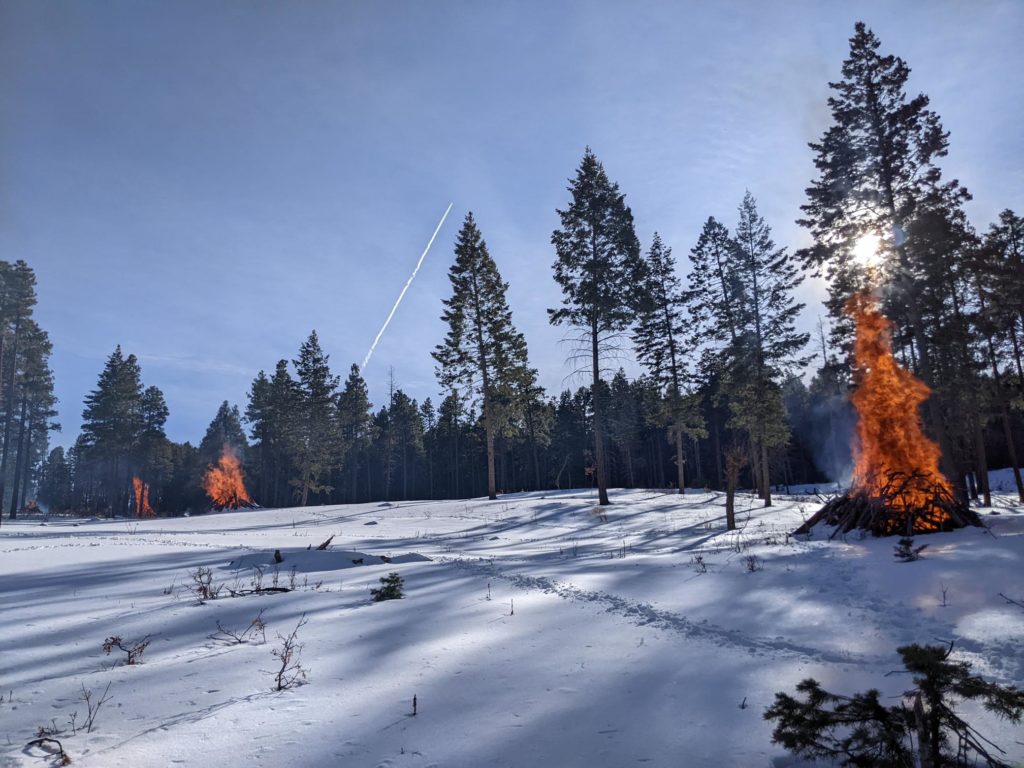FSYC and AHAL: a story of experience from the recent seasons
 Written by Genevieve Conley
Written by Genevieve Conley
My name is Genevieve Conley and I was born and raised in Santa Fe, NM. Growing up in the Southwest, I spent most of my time outside exploring and fostering a deep connection with the high-elevation forests that I call home. Wildfires and prescribed burns were a part of the life I lived outdoors, but I only had experience with them from afar. Fire was simply a feature on the landscape or a subject in a class, but not something that I felt could be a job. My curiosity for firefighting began in college but I never had a chance for on-the-ground experience. Instead, I spent my summers and schooling focused on landscape ecology, monitoring, and rangeland science until I found the Forest Stewards Guild programs.
I stumbled into the Forest Stewards Youth Corps (FSYC) fire program in fall 2021, when I had just finished a biological monitoring contract with the New Mexico State Land Office. I was preparing for fieldwork in Chihuahua, Mexico, and was searching for my next outdoor adventure. I loved hiking, spending time outside, and I had always wanted to apply for a fire position but lacked all the basic training required by most agencies. The fall program provided the perfect in-depth introduction to many aspects of fire operations, fire ecology, forest management, and thinning and reforestation efforts. On the FSYC crew, I strengthened my leadership skills outdoors, traveled to places in New Mexico I had never seen before, and had the thrilling experience of putting fire on the ground on burns of up to 2000 acres.

One of my first broadcast burns was on the Enseñada Rx in the Carson National Forest. This was my first burn with combined aerial and ground ignition. I started the day on a holding team that was assigned to climb to where the first igniters were going to start. The view was amazing and we could see the helicopter flying above the sections that were already glowing with fire. As the sun set, my team climbed down from our assigned patrol area and were headed out of the fire when we were called to a spot fire. We quickly raced up the hill using only the light from the burning forest around us and our headlamps. The burst of energy and teamwork necessary to complete our task was exhilarating. This experience left me wanting to know more about operations and explore other aspects of prescribed burning.
In winter 2022, I had the opportunity to be a squad member on the All Hands All Lands Pile Squad to continue my fire education. Working on a smaller crew, I gained more specialized skills and direct mentorship that helped build my confidence. I grew as a beginner sawyer, had my first experience burning piles on private and federal lands, and had the opportunity to not only learn but teach what I had learned to others. The pile squad put my strength to the test hiking with saws through the snow in Trampas, NM, and climbing up steep slopes in 10-24 inches of snow in the Valles Caldera. I not only hiked more miles than I ever had during winter months before, but I gained a broader understanding of the intensive planning and year-round efforts necessary for fire mitigation and maintenance of forest health.

Both experiences have given me a better understanding of on-the-ground fire management and forest restoration initiatives. I view this work and the knowledge I gained as an essential piece of my ecological education given the changing climate and increase of wildfire activity across the country. I plan to continue my professional career in sustainability and environmental sciences to conserve the natural places we call home. These hands-on experiences have enriched my understanding of forest and fire ecology and will continue to serve me in my future environmental career.
